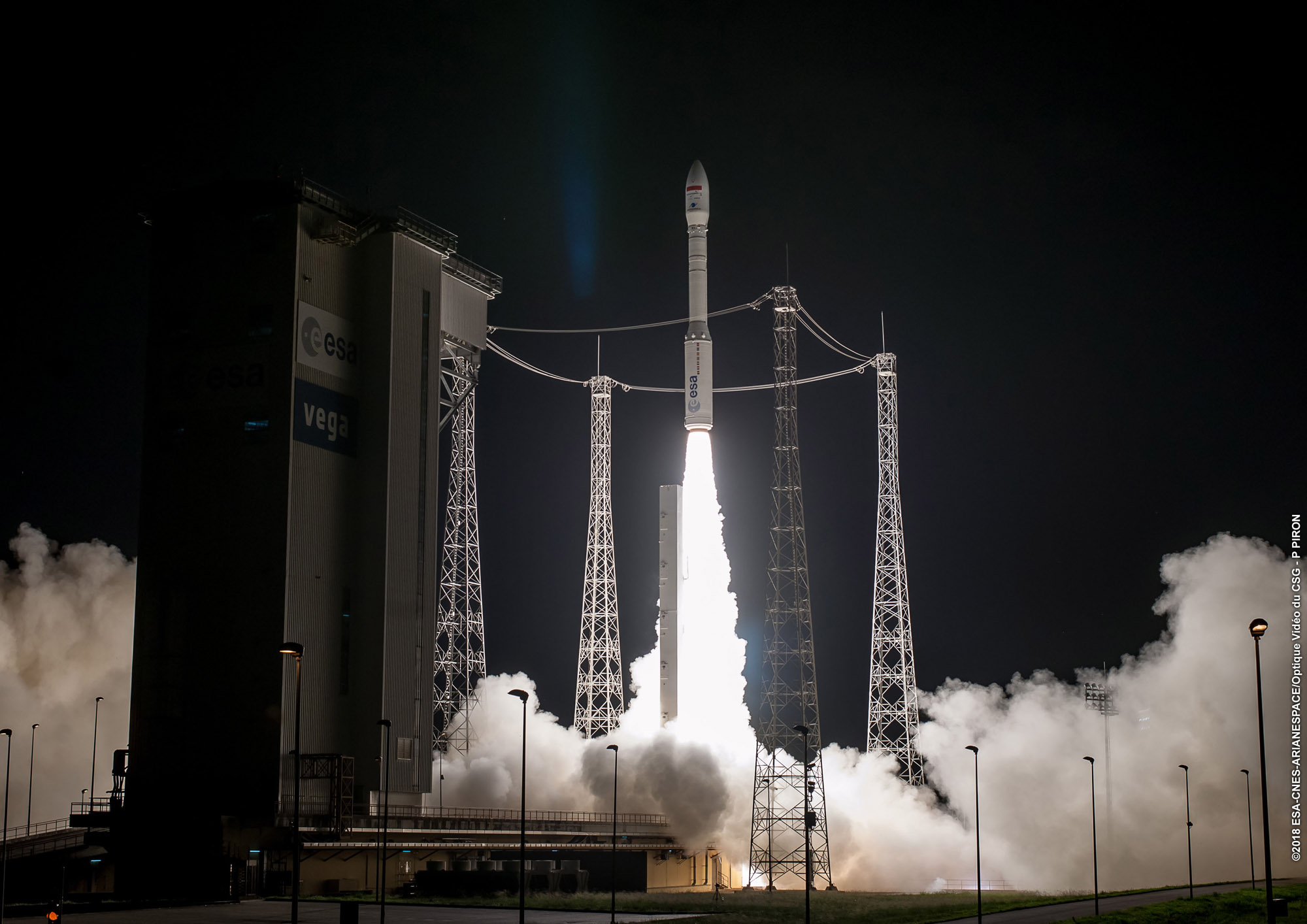European Vega Rocket Launches Moroccan Satellite Into Orbit
A European Vega rocket launched into space Tuesday (Nov. 20) to deliver a new Earth-observation satellite into orbit for the Kingdom of Morocco.
The Arianespace Vega rocket lifted off at 8:42 p.m. EST (0142 Nov. 21 GMT) from a pad at the Guiana Space Center in Kourou, French Guiana, in South America. It successfully delivered the Moroccan satellite Mohammed VI-B into orbit about an hour later.
"Arianespace is proud to have orbited the Mohammed VI–B satellite on our 13th successful launch in a row of Vega since it was introduced at the Guiana Space Center," Arianespace CEO Stéphane Israël said in a statement. "We are delighted that the Kingdom of Morocco has continued to entrust us with its second satellite, following the Mohammed VI – a satellite that we launched successfully last year."
Tuesday's launch marked the second flight of a Vega rocket this year and the 13th overall since the booster's debut in 2012. Vega is a four-stage rocket designed to launch small commercial and science satellites into orbit. The rocket is 98 feet (30 meters) tall and can launch payloads of up to 5,511 pounds (2,500 kilograms) into orbit.
The Mohammed VI-B satellite is near the middle of that payload range. It weighs about 2,442 pounds (1,108 kg).
"The Mohammed VI–B satellite will mostly be used for mapping and land surveying, regional development, agricultural monitoring, the prevention and management of natural disasters, monitoring changes in the environment and desertification, and border and coastal surveillance," according to the Arianespace statement.
Email Tariq Malik at tmalik@space.com or follow him @tariqjmalik. Follow us @Spacedotcom and Facebook. Original article on Space.com.
Breaking space news, the latest updates on rocket launches, skywatching events and more!

Tariq is the award-winning Editor-in-Chief of Space.com and joined the team in 2001. He covers human spaceflight, as well as skywatching and entertainment. He became Space.com's Editor-in-Chief in 2019. Before joining Space.com, Tariq was a staff reporter for The Los Angeles Times covering education and city beats in La Habra, Fullerton and Huntington Beach. He's a recipient of the 2022 Harry Kolcum Award for excellence in space reporting and the 2025 Space Pioneer Award from the National Space Society. He is an Eagle Scout and Space Camp alum with journalism degrees from the USC and NYU. You can find Tariq at Space.com and as the co-host to the This Week In Space podcast on the TWiT network. To see his latest project, you can follow Tariq on Twitter @tariqjmalik.

